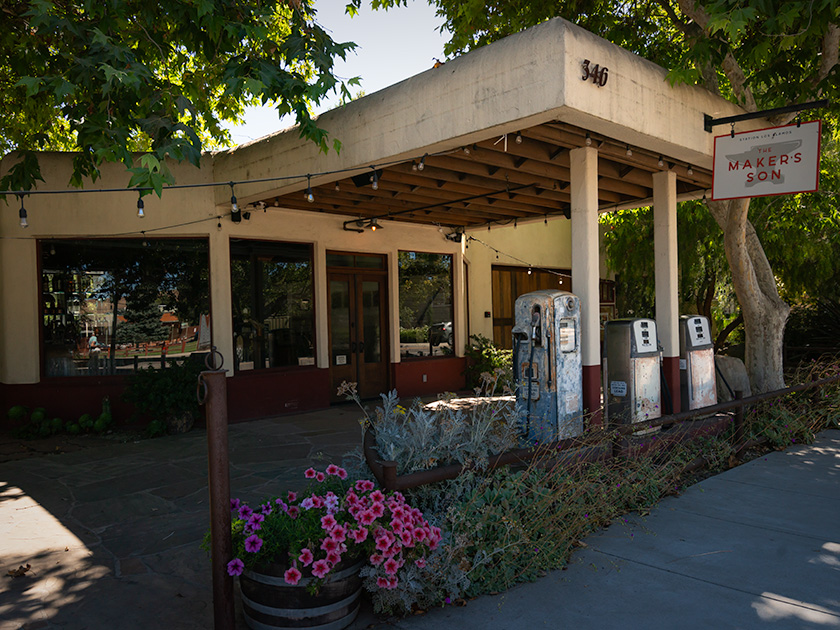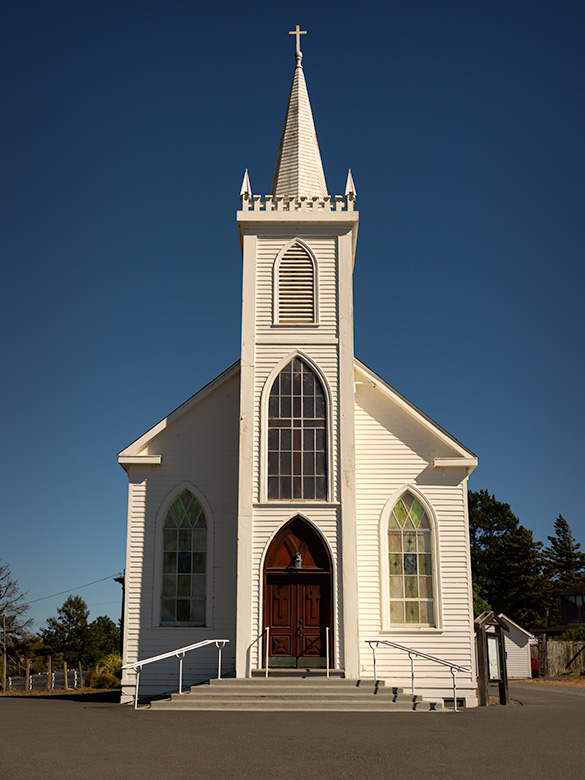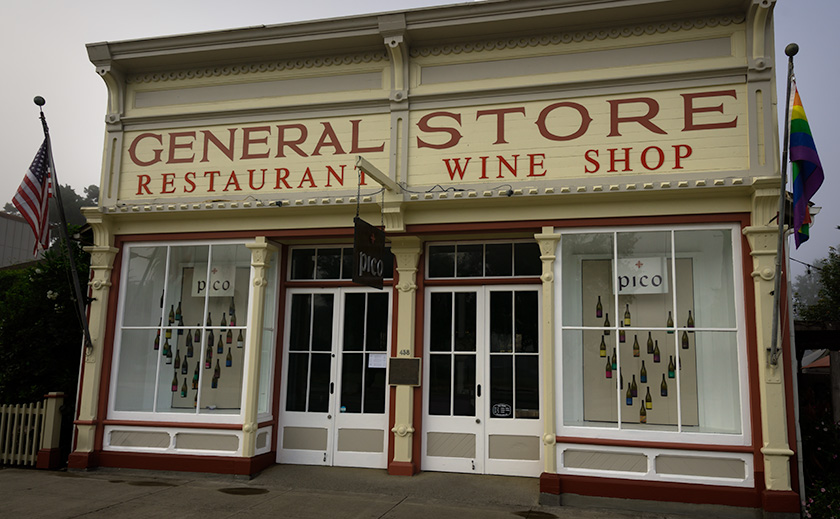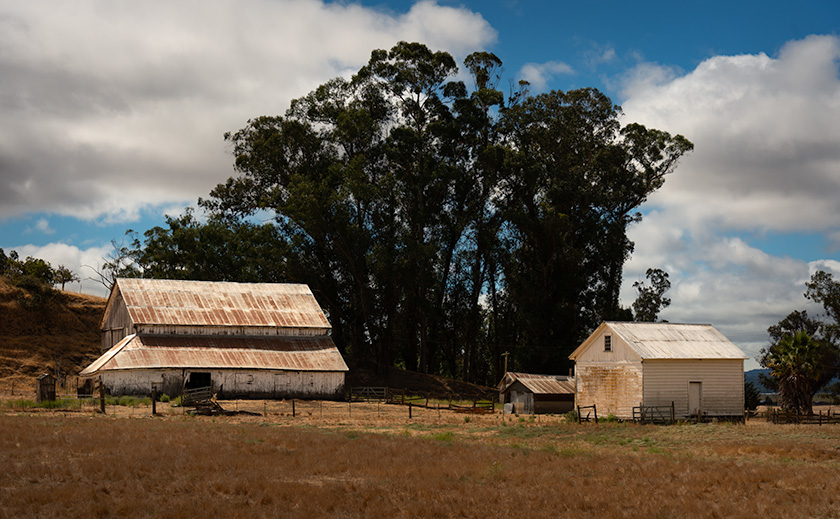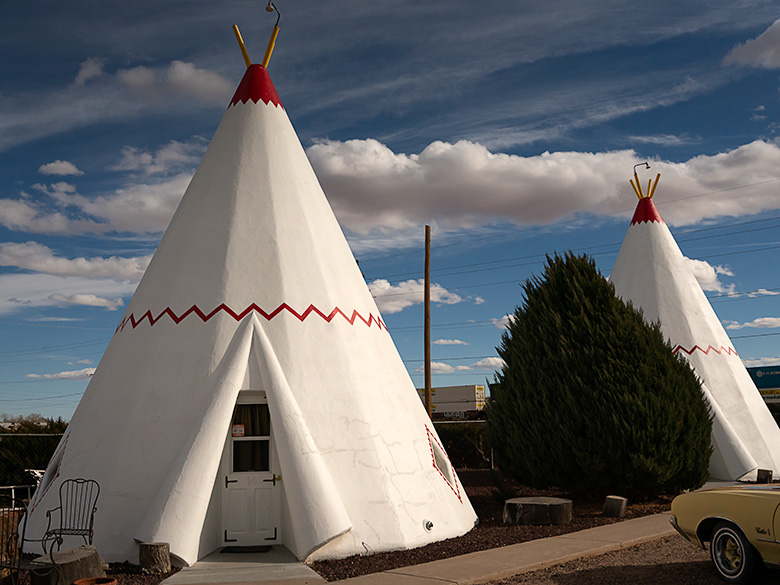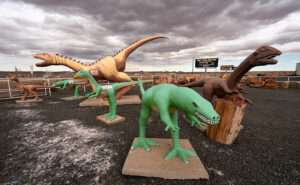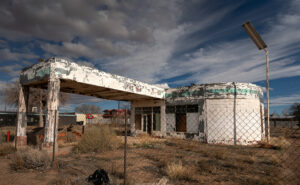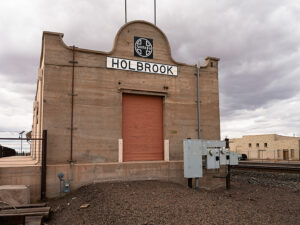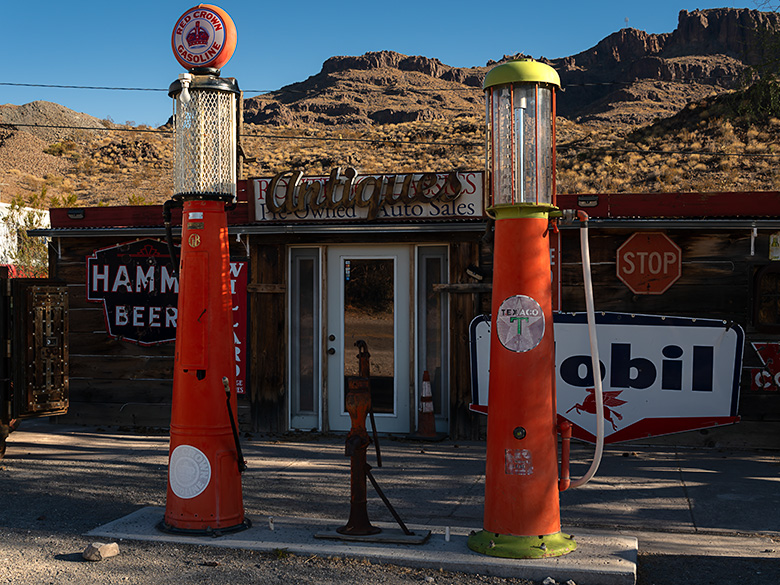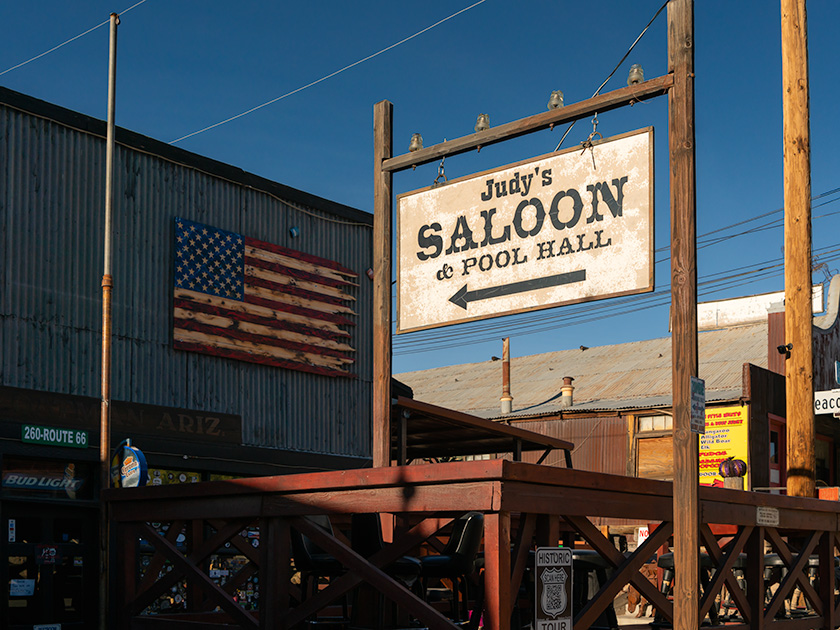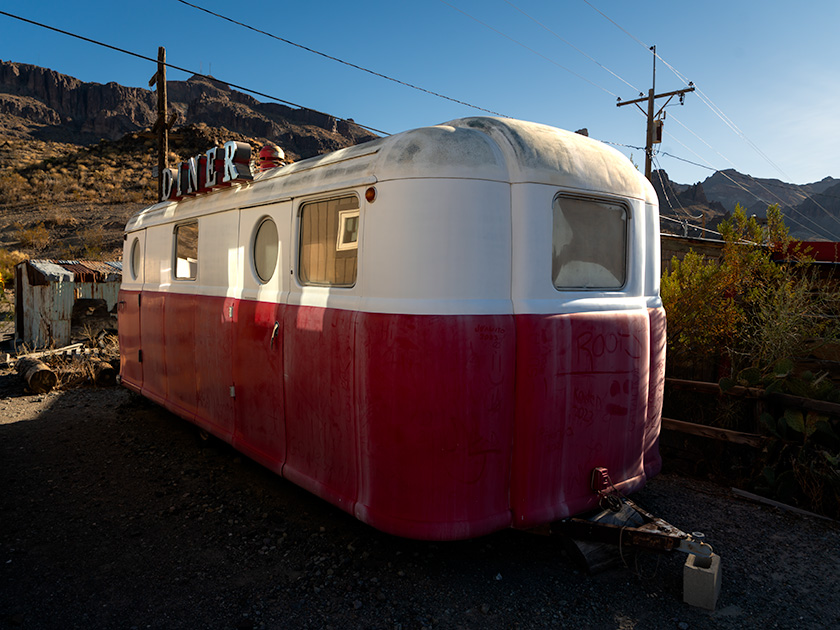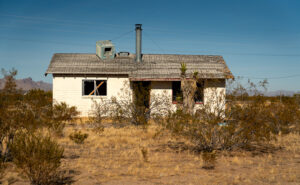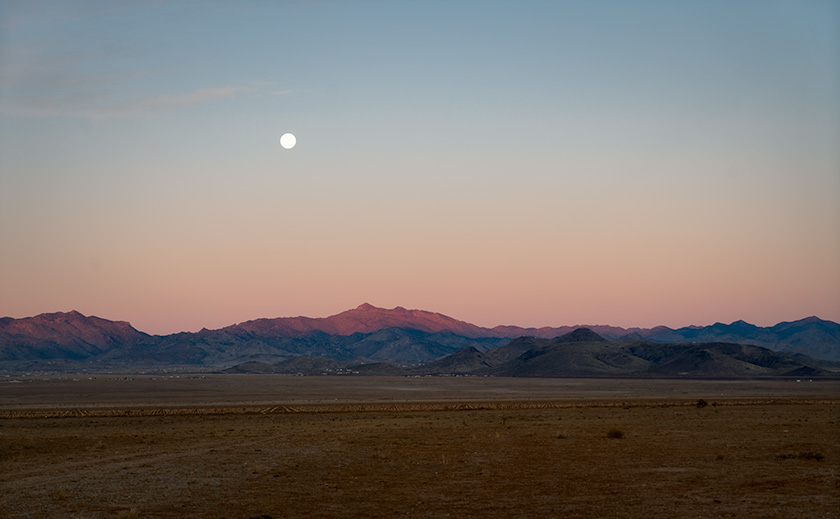
Last month, we wrapped up a late shoot in Chloride, and instead of making the long haul home, I had a brilliant idea: stay in Kingman and take the scenic route back through Hackberry, Truxton, and Seligman. That way, we’d get two stories for the price of one—and a night in a classic Route 66 motel. The neon glow of the old motor court signs flickered against the desert sky, whispering echoes of a bygone era when weary travelers pulled off the Mother Road for a night’s rest.
A second advantage to a night in Kingman was more selfish. I love Chinese food and’ll go out of my way for even a mediocre plate of Moo Shu Pork. Since Queen Anne agrees to accompany me on these shoots if I dine with her, I figured the two places in Kingman were better than what we have at home. Although the food was good and plentiful, she was miffed that they didn’t have her wine. She wouldn’t be able to have her guilt-free, cut-loose-on-the-bar kind of evening. But that’s alright because, unbeknownst to her, we had an early morning ahead—and you can’t Go-go dance to Chinese music.
The Great Hackberry Jewelry Heist (That Never Happened)
I wanted to shoot Hackberry in the rising sun, and since the famous Route 66 stop was a 30-minute drive from Kingman, I planned for us to leave in the dark. But convincing Anne to wake up before dawn takes either divine intervention or a well-crafted lie. I went with the latter.
“Did you know the Hackberry General Store has a hidden estate jewelry section?” I asked. “And the best deals are right when they open?”
The bait was set.
We were up before sunrise. Anne may never trust me again, but sacrifices must be made. She mumbled something about the unholiness of pre-dawn hours as she sleepwalked to the car, clutching her Diet Coke like a life preserver.
Beakfast Burritos and a Moonset
We left so early that even the motel’s complimentary continental breakfast wasn’t awake yet. So, we made a pit stop at Maverik because nothing says “fuel for adventure” like a gas station, breakfast burrito, or coffee strong enough to remove paint.
The scent of sizzling eggs and chorizo mingled with gasoline fumes as I fueled up the Turd (our trusty RAV4). The heater started working around the Kingman Airport, just after Andy Devine Avenue fades into Old Route 66. That’s also when the dashboard began flashing “Icy Road Warning.” The ever-dramatic car decided to alert us that we had ventured into the Arctic. It was in the 20s, and we were suddenly on an expedition neither of us signed up for.
Then I saw it—a full moon setting over the Cerbat Range. The lunar glow bathed the craggy peaks in an ethereal silver light. It was the kind of scene that makes photographers pull over on a whim. But there were power lines. Ugly, unavoidable power lines. I fought with myself about stopping, but in the end, I found a gate and stopped the truck. Walking up to it, I bent over and shoved my body through the opening as gracefully as a fat man wearing two sweaters and an insulated jacket could, then walked another eighth of a mile to get the shot. Anne, meanwhile, stayed in the car, watching me with a smirk.
“I was just waiting for you to get stuck,” she admitted.
“Why, did you think you’d need to go get help?”
“No, I was going to head back to the motel and finish my night’s sleep.”
Freedom on the Open Road
There’s a reason I prefer taking back roads. It’s not about getting there faster but about being free to drive the way you want. Out here, the road stretches for miles, uninterrupted. There is no wall of semis, no impatient tailgaters, and no high-speed herd mentality.
I was reminded of this on the Alcan Highway in the Yukon, driving my old Mercedes ML 350 diesel. On those endless roads, you didn’t just have a passing lane—you had the whole countryside. You could gradually pull into the other lane, ease past a slower car, and merge back without drama.
That’s the beauty of this section of Route 66—one of the few long, well-maintained stretches left. The others have faded into history, lost to time and neglect. You’re not in a rush—you’re just enjoying the drive.
A Golden Sunrise and a Locked Door in Hackberry
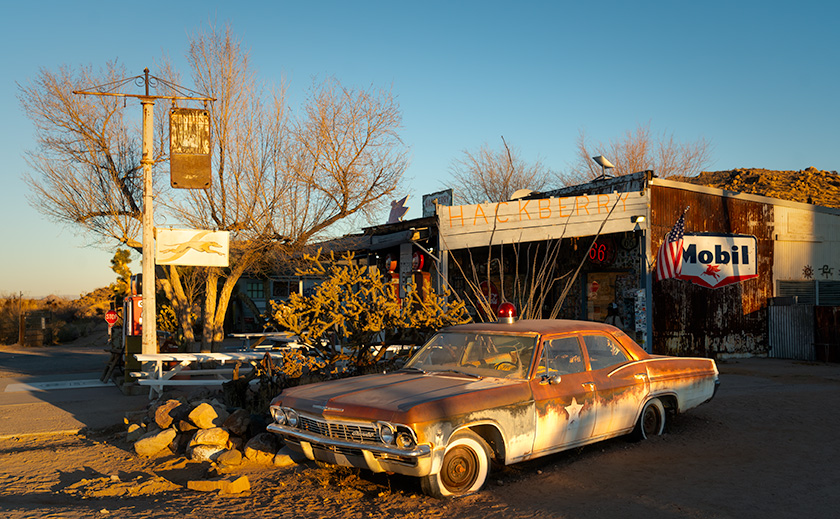
We arrived in Hackberry just as the sun cleared the horizon, spilling golden light over the cracked pavement and rusted relics. The timing was perfect. The store, however, was closed for another three hours. Anne was less than pleased.
Anne scowled at the locked door.
“Oh, honey,” I consoled, trying to sound convincing, “I wanted you to see all their fabulous antique jewelry. I’m so sorry. We’ll have to come back another time.”
Her silence was deafening.
Meanwhile, I got my shots—rusted gas pumps, vintage signs, an old patrol car straight out of a noir film. Hackberry General Store isn’t just a shop; it’s a time capsule of Route 66, stuffed to the rafters with kitsch. Route 66 place mats, belt buckles, neon clocks, and car posters—most likely all made in China. If you ever needed a flaming skull ashtray or a bottle opener shaped like a ’57 Chevy, this would be the place to find it.
Racing a Freight Train Across the Desert
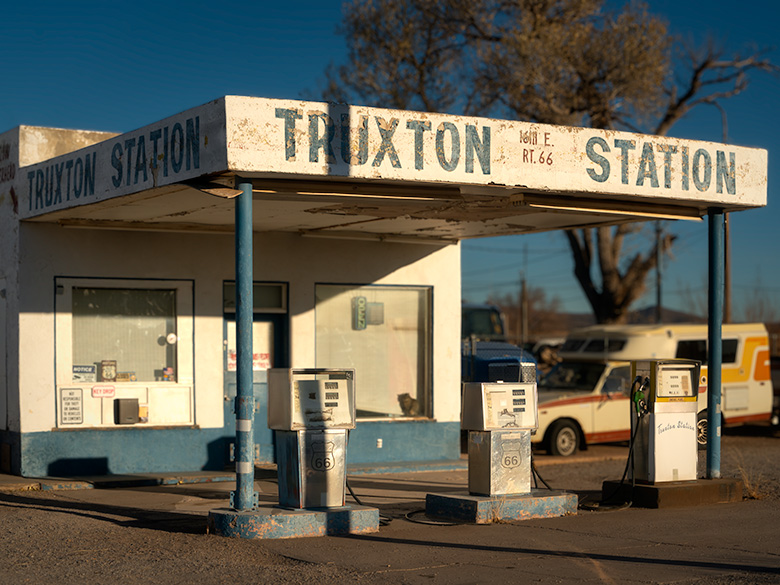
As we rolled east, we picked up a new travel companion—an eastbound freight train. It became a game of leapfrog. We’d catch up to the lead engine, pass it, stop ahead to grab another shot, then watch as it rumbled by again—only to start the chase all over. Wash, rinse, repeat, like having John Henry as a sidekick. Anne was convinced she knew the engineer’s kids’ names when we reached Ash Fork. Probably their dog’s name, too. Any longer, and we’d have been invited to Thanksgiving.
Lost History Along Route 66: Truxton to Peach Springs
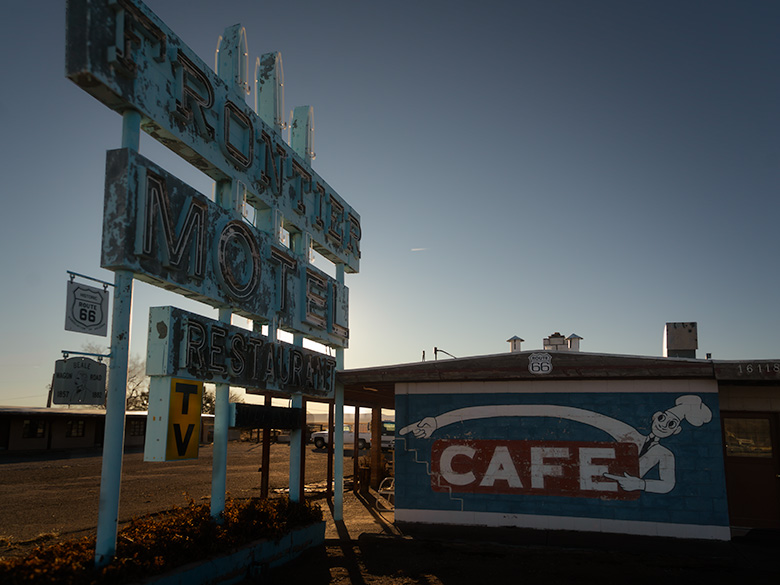
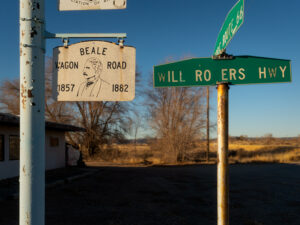
Next up, Truxton. We shot the Truxton Gas Station (still open occasionally) and the Frontier Motel, one of the larger lodgings from Route 66’s heyday. A smaller placard marking the Beale Wagon Road was hanging below the motel’s sign. I had written about Edward Beale’s adventures before, but I never knew there were actual signs marking his route. And now that I do? I want one.
We continued east, hoping to photograph two buildings listed on the National Register of Historic Places—the Indian school west of Peach Springs and the historic Shell Station in Peach Springs with its distinct rock-wall façade. The school, a stark reminder of an era when Native children were removed from their families, stands as an important, if painful, piece of history. The Hualapai Tribe recently received grant money to restore both sites, but when we arrived, they were surrounded by construction equipment—not exactly photogenic. Oddly, there wasn’t a worker in sight. Whether it was a funding delay, a supply chain holdup, or just the usual bureaucratic red tape, we couldn’t say. We know that it gives us another excuse to return to the Mother Road (as if we need one).
Between Peach Springs and Seligman, we passed a stretch of restored Burma Shave signs, their playful rhymes adding a touch of nostalgia to the drive. We couldn’t resist reading them aloud in unison as we came across them, like a couple of hopeless jerks, laughing at every corny punchline.
Why You Should Take This Route 66 Road Trip
If you’ve never driven this stretch of Route 66, you should. And if you need an excuse, there’s no better time than the annual Hot Rod show. This rolling event brings classic cars to Seligman, Kingman, Oatman, and Needles, turning each town into a pop-up car show. (The Route 66 Fun Run will occur May 2–4, 2025. This 35th annual event covers a 140-mile drive from Seligman to Topock/Golden Shores, featuring events in nearly every community along the way, a car show in downtown Kingman on Saturday, and an award ceremony in Topock/Golden Shores. More details can be found on the Historic Route 66 Association of Arizona’s website: Route 66 Fun Run.
Even if you don’t go for the cars, go for the drive. Route 66 is a road worth slowing down for.
Final Thoughts
Thanks for riding along with us on this Route 66 adventure! As always, larger versions of these photos are in the New Work collection on our website: www.jimwitkowski.com/newWork.
We’d love to hear your thoughts, so feel free to leave a comment—but be quick, as comments close after five days (thanks to the bad guys).
Be sure to join us next month when we dash to the coast for another adventure—you won’t want to miss it!
Until then, keep your spirits high and your humor dry.
jw

